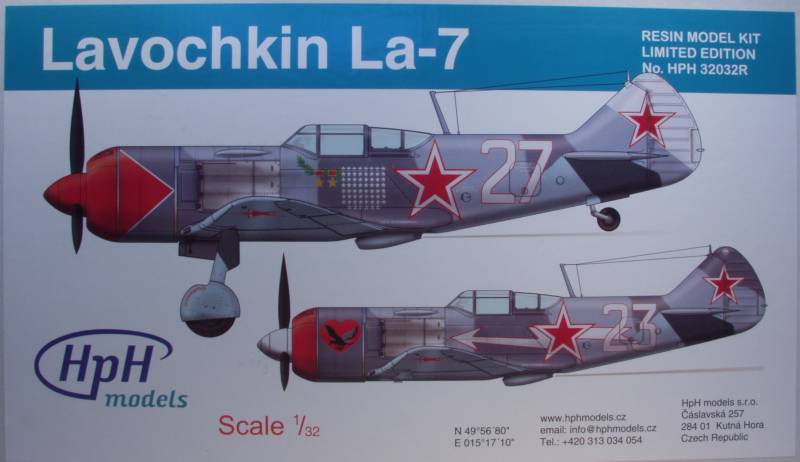
History :
The La-7 was a further development in the Lavochkin line of aircraft dating back to the LaGG-1 in 1938. The LaGG-1 was followed by the LaGG-3 and with a change of engines from in line to radial became the La-5. By 1943 the La-5 had become the mainstay of the Soviet air force but Semyon Lavochkin, the head designer, felt it could be further improved upon. At this point in the war supplies of light alloy metals had become more stable and as a result Lavochkin began replacing some of the wooden parts of the La-5 with light alloy parts. This included the wing spars. Other streamlining changes were made as well increasing performance further. A more powerful engine and heavier armament made the aircraft a potent weapon which was not only faster than the Fw 190, its main competitor, but it was more maneuverable. The La-7 first flew in November of 1943 and entered service the following spring. The La-7 earned itself a superb combat record by the end of the war having been flown by the top two Soviet aces. The La-7 was the only Soviet aircraft to shoot down an Me 262. Total production of the La-7 amounted to 5,753 aircraft, some of which soldiered on after the war.
The Kit:
The HpH Models kit comes in a sturdy top opening tray type corrugated box with color profiles of the two sets of markings supplied in the kit. Inside the box is compartmented and each compartment contains parts that are wrapped in bubble wrap. The smaller parts are enclosed in zip lock bags which are also wrapped in bubble wrap. Also in zip lock bags are photo etch, decals and laser cut microfiber seat harness. Like other HpH kits the box also contains a Belgium chocolate. Also included in the box is a CD with the assembly instructions. If you haven't guessed already this is a mostly resin kit and a pricey one at that but if you have to ask you probably can't afford it. Actually it's about the same price as one of the premium Tamiya kits if you spend money on any after market stuff for it. With this kit there really isn't anything else needed but don't expect it to be as easy to build or fit as well as that same Tamiya kit. But then Tamiya doesn't make 1/32 La-7.
The kit is molded in gray resin and though I haven't looked it over with a magnifier I have yet to find any visible air bubbles, short shots or other molding defects. While some of the parts have some fairly large pour blocks the actual contact point between the part and the block are quite thin and a light scribe with an x-acto knife should allow them to snap right off. Lets start with the fuselage halves shown below. Each half has a pour block across the top edge. Again the connection point is quite thin and should be easy to remove. Both the cowling opening and the cockpit opening are flashed over with thin resin. The halves appear reasonably straight and flat but without cleaning them up first it's not possible to fit them together. There is some bow towards the tail but these castings are as thin or thinner than most injection molded kit so I don't see it being an issue. The exterior surface is very smooth and features finely engraved panel lines as well as rivets and fasteners. There is not an overabundance of either as parts of the plane were still made with wood. The inside of the vertical tail features structural detail as this will be seen through the tail wheel opening. The fuselage halves do have several alignment pins which are not common on most resin kits.

------------------------------------
The inside of the cockpit sidewalls has a lot of nice molded in detail which will also be embellished with PE.
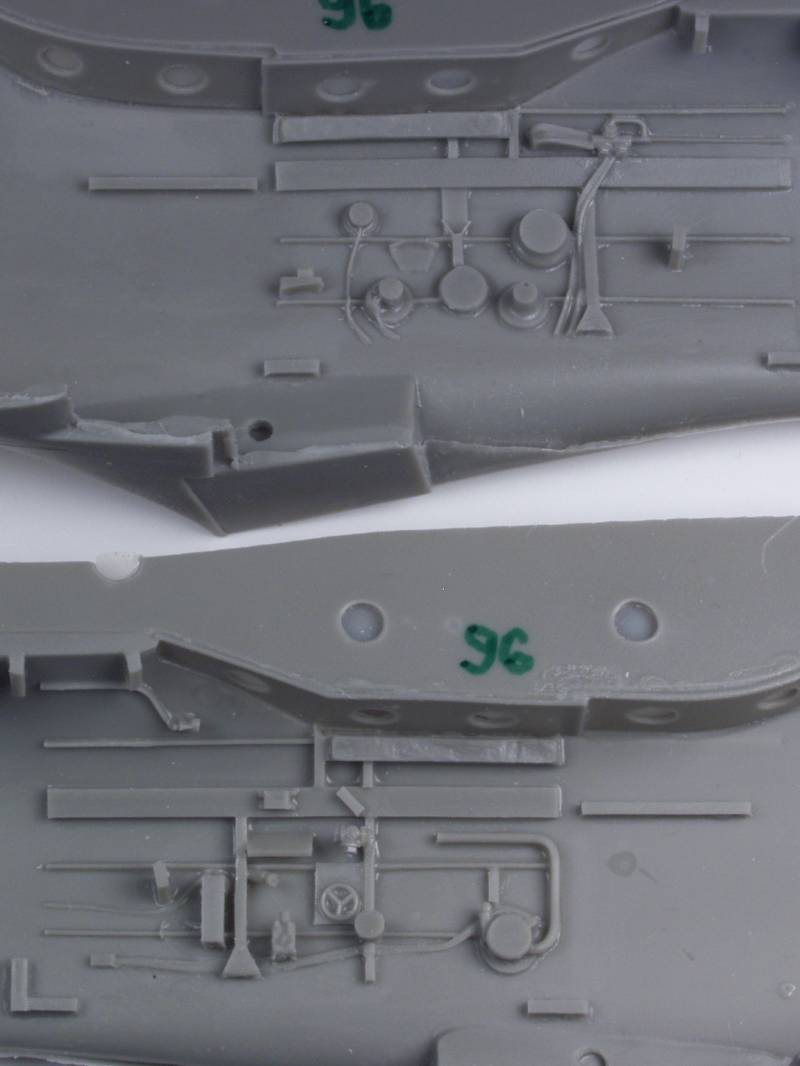
The wings have a full span piece for the bottom and separate halves for the top. As with the fuselage the mold block mating points should allow easy removal. The gear bay openings on the bottom are flashed over with thin resin. The lower wing has six rather large alignment pin with matching sockets in the upper wings which should be a great help when assembling them. The wing castings are pretty straight and also like the fuselage they are some of the thinnest resin cast parts I have ever seen. Most limited run injection molded kits have parts molded much thicker than these. There is a wing spar supplied which should help with the dihedral. Separate wheel wells are supplied as are structural pieces for the inside of the flap areas is you decide to drop the flaps.
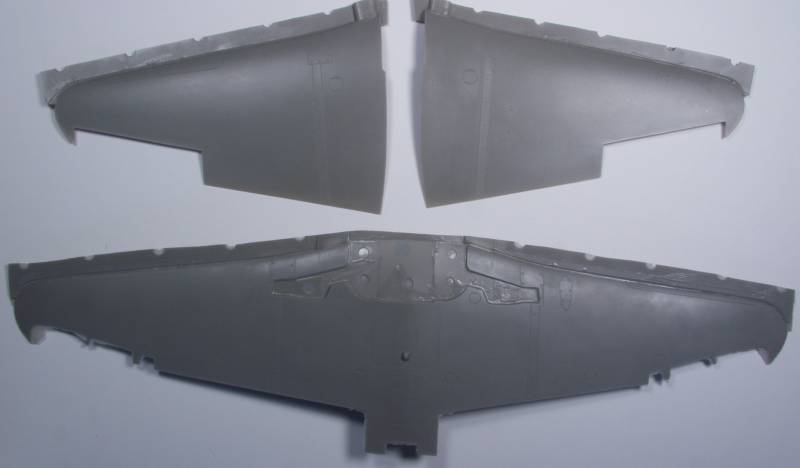
Here is a close up of the surface detail found on the exterior of the kit.

The next photo includes the horizontal tail surfaces, elevators, ailerons, rudder, wheels and hubs, landing gear doors and a couple of parts I haven't looked up yet. The tires are weighted but not heavily and my tail wheel looks to be a little out of round, at least the hole in the middle does.
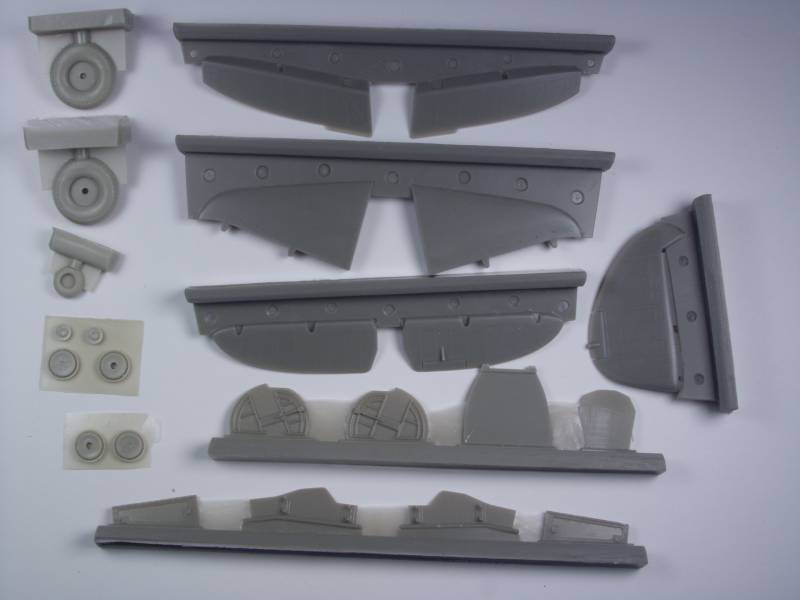
This next photo has the wing spar, a stiffener for the vertical tail, the interior flap detail for the wings, some bulkheads, cockpit floor, gear bay parts, rudder pedals, propeller spinner and the round thing which is a bulkhead for the cowling and provides a mount for the propeller shaft.
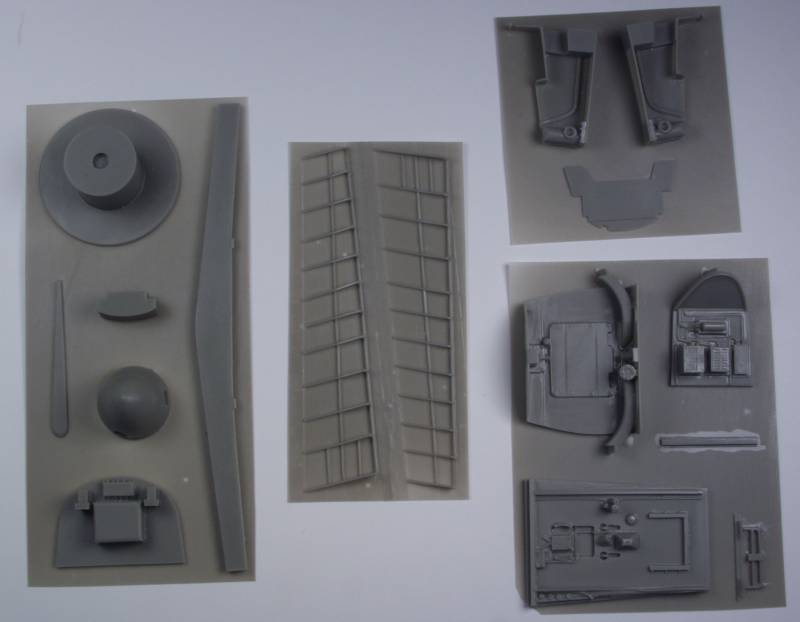
Next up are the propeller blades, landing gear struts and retraction arms, pilots seat, exhaust stacks, control stick, oil cooler housing, tail wheel struts and a couple more parts for the gear bays. The main gear and tail wheel strut have internal metal for extra strength.
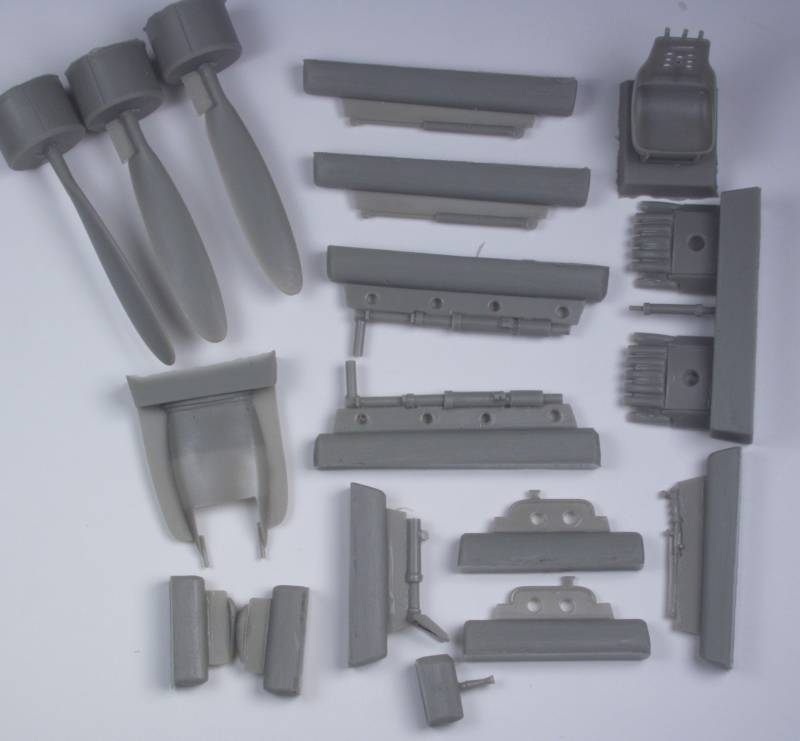
And lastly some odds and ends parts including the gun sight and antenna mast.
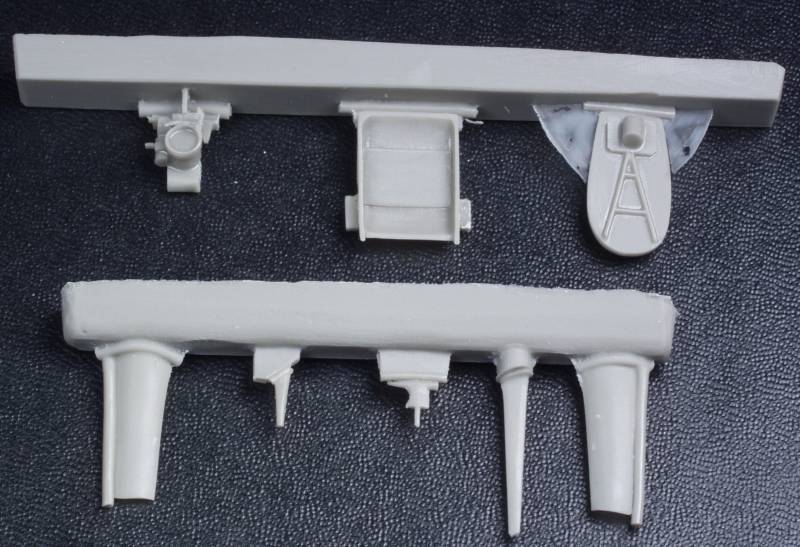
You may notice the kit contains no engine parts. That's actually a good thing as you can't see it anyway as there is a cooling fan in the front of the cowling.
The kit comes with three frets of photo etch, the first of which is colored. It contains most of the cockpit embellishments
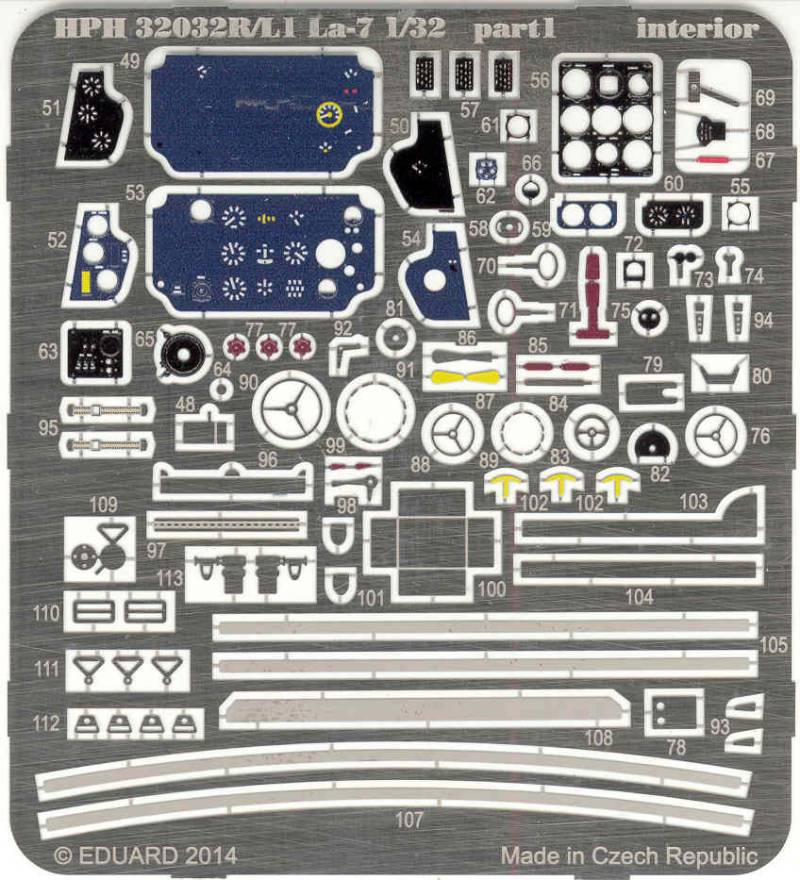
The second fret contains parts to make up the engine cooling fan and parts to laminate on to the gear doors to enhance the level of detail on those, I haven't tracked down where all the other parts go as of yet.

The last fret has parts to detail the interior of the flaps should you want them open.
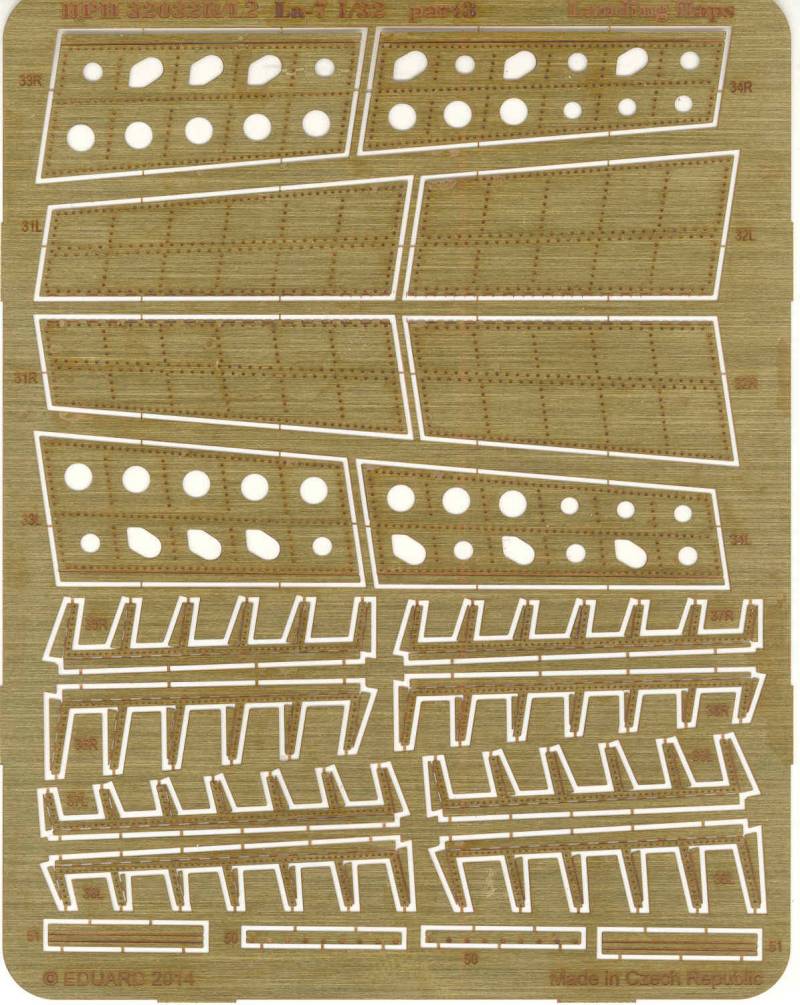
The kit also provides laser cut micro fiber harnesses. I have yet to try these, they look really nice when done but installing all the hardware looks tedious at best.
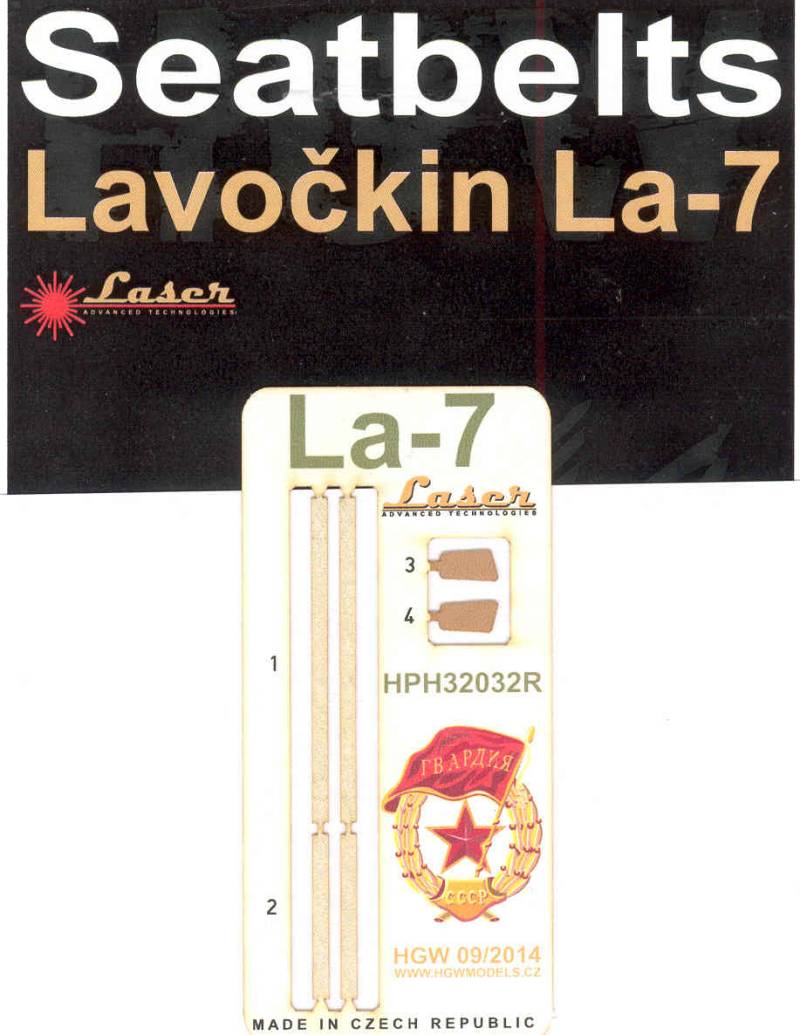
The clear parts are also cast resin and quite clear, they should look even better after a dip in Future. The kit comes with a sheet of precut masks for the clear parts.

The decals provide marking for the two aircraft shown on the front of the box. The decals look to be thin, opaque and in register with minimal excess clear film. some stenciling is supplied and would be readable if you can read Russian. No indication on the sheet as to the producer and I have not used their decals so I can't speak to the ease of application.
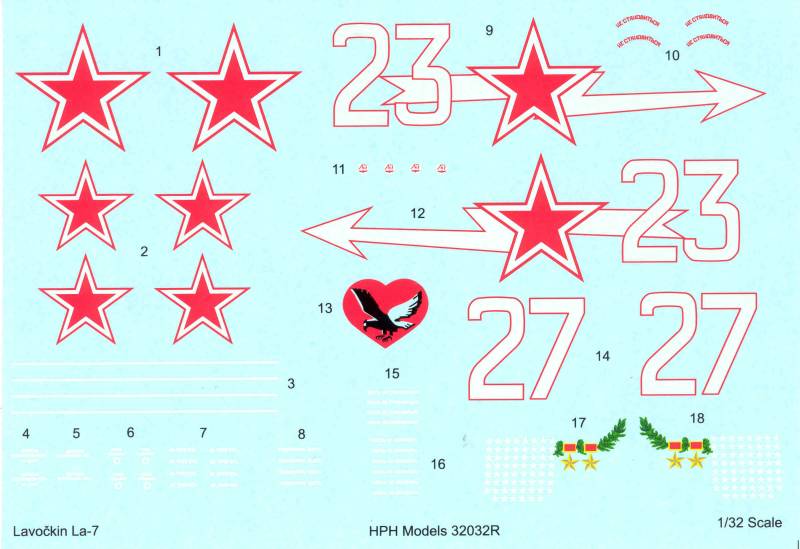
The instructions are provided as .jpg files on a CD, the detail is great but I think before I build the kit I'll print them all out, much easier than going back and forth between files. Here is a copy of one of the pages.
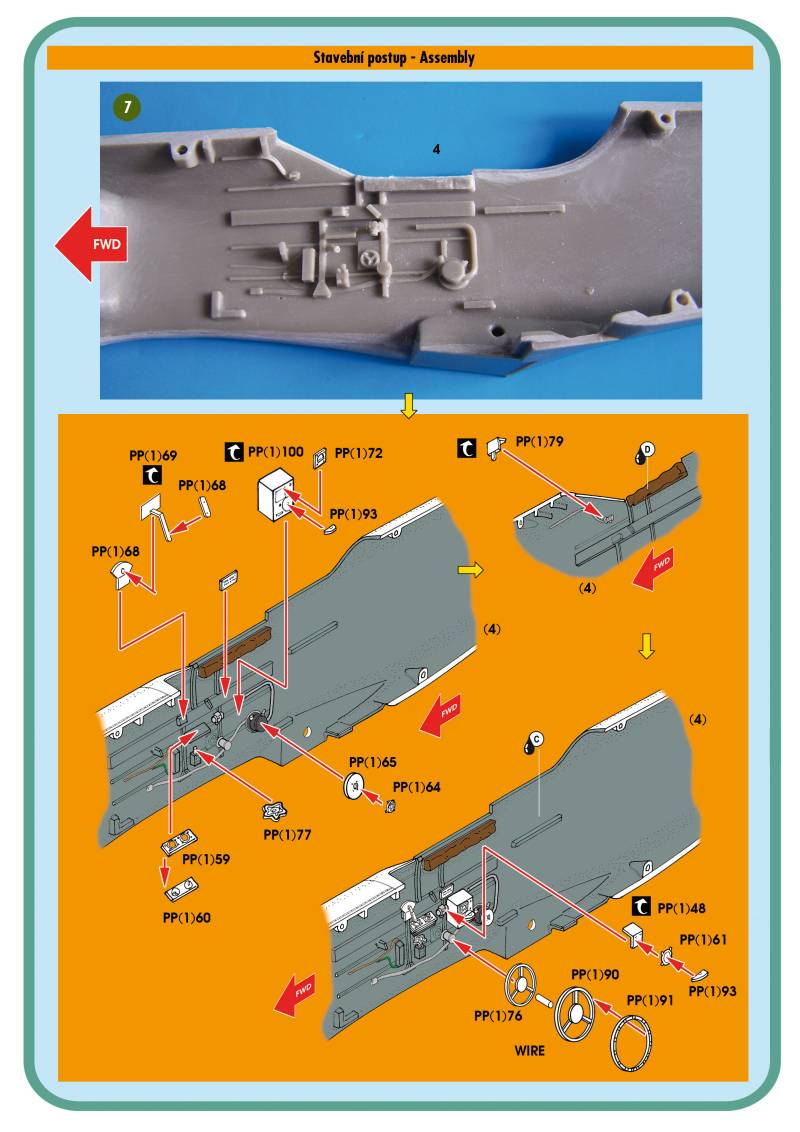
My 2¢: This is an extremely nice kit for an all resin kit, the castings are all crisp and lacking defects and are some of the thinnest I've seen for the airframe parts in resin. While it will require more clean up work than an injection molded kit and I'm certain there will be some fit issues but compared to most resin kits this one is a Cadillac. Highly recommend to those with some experience with resin kits.
HpH Models
